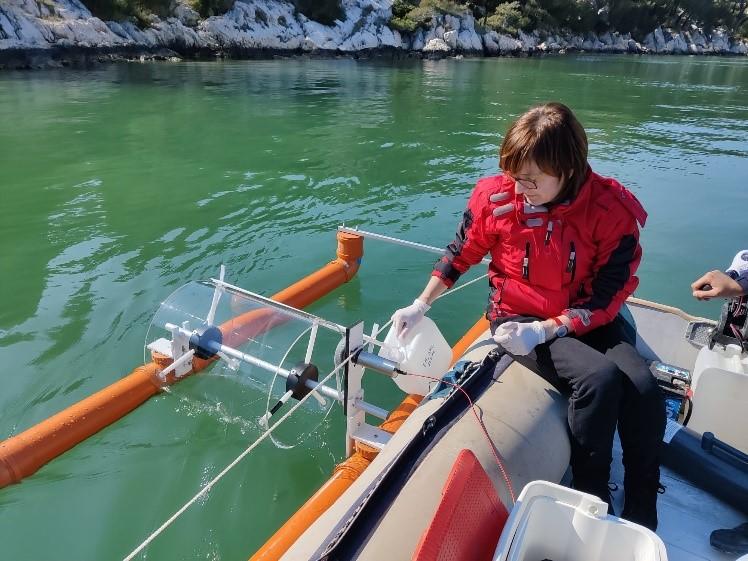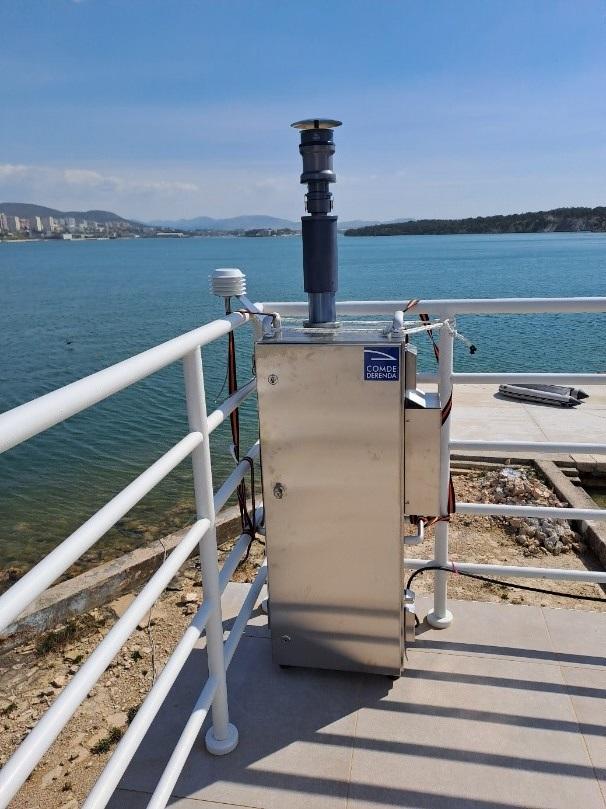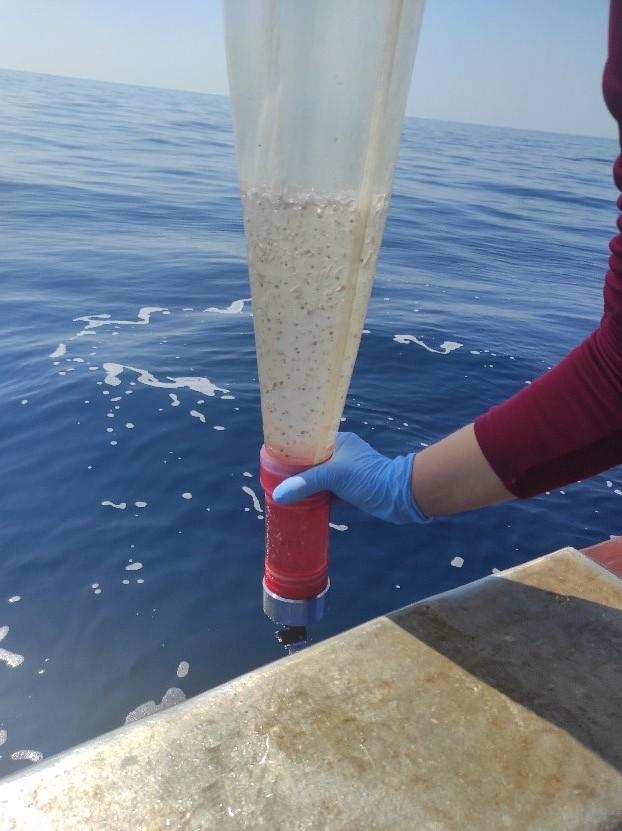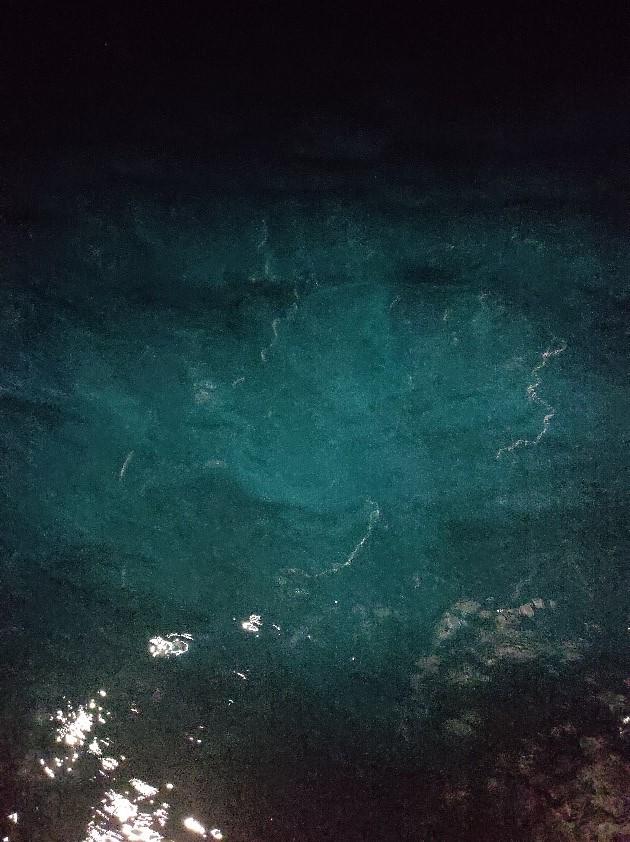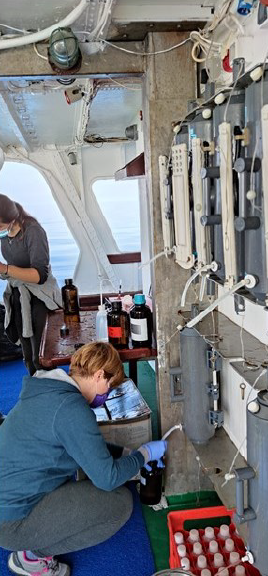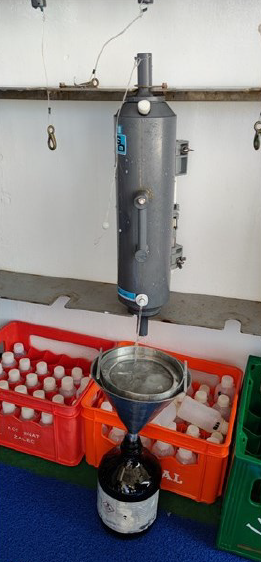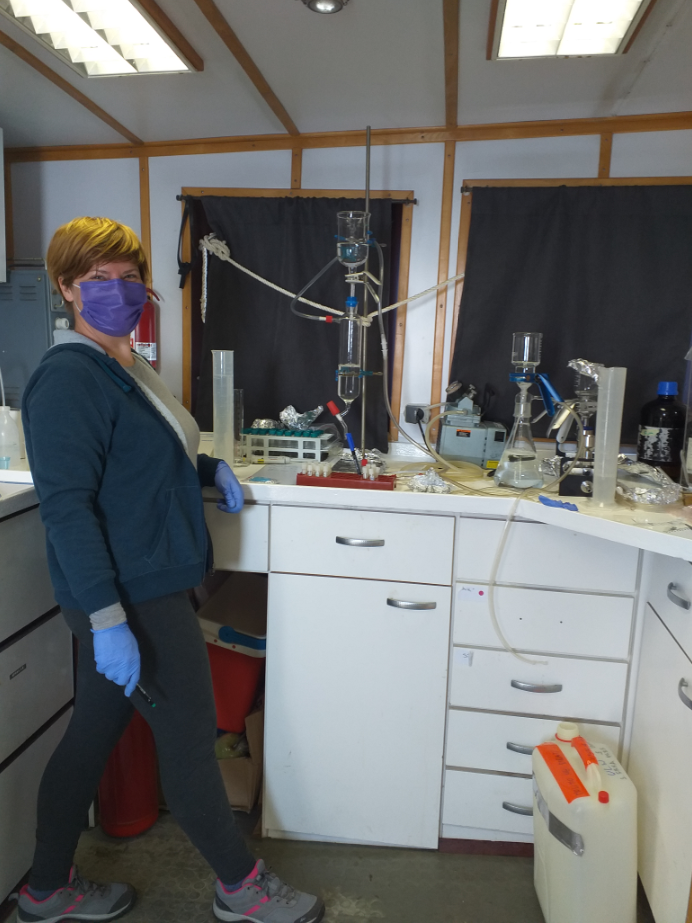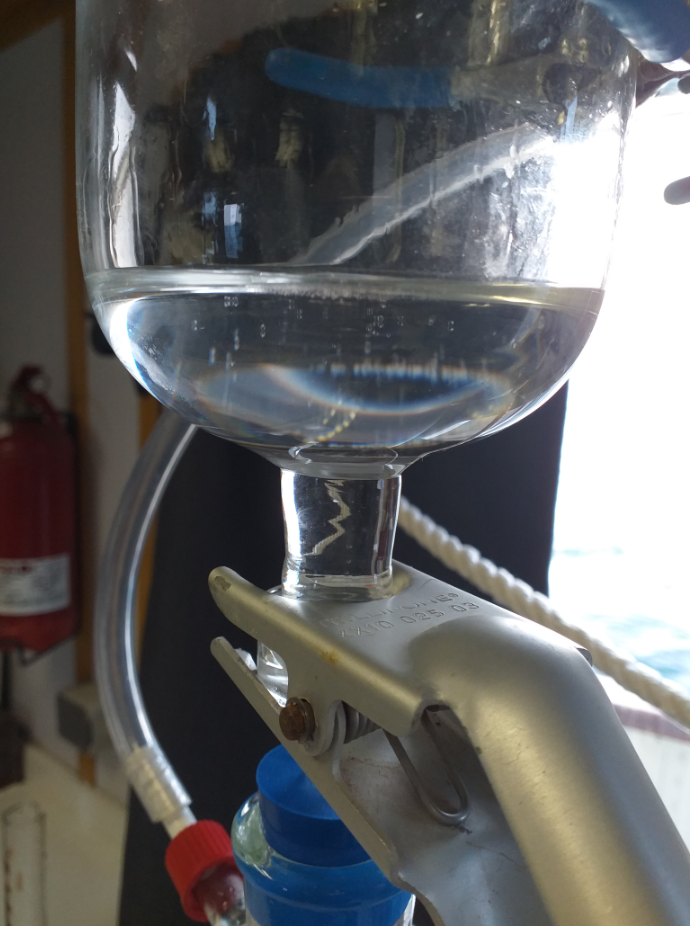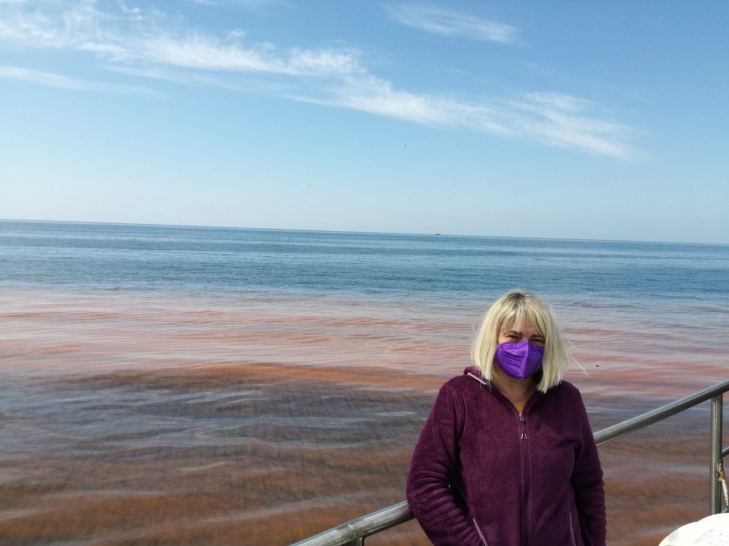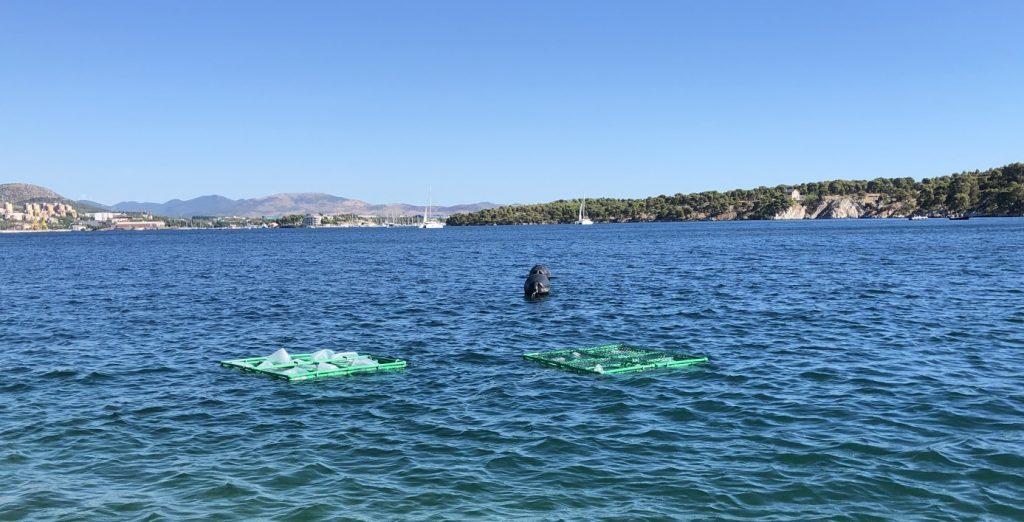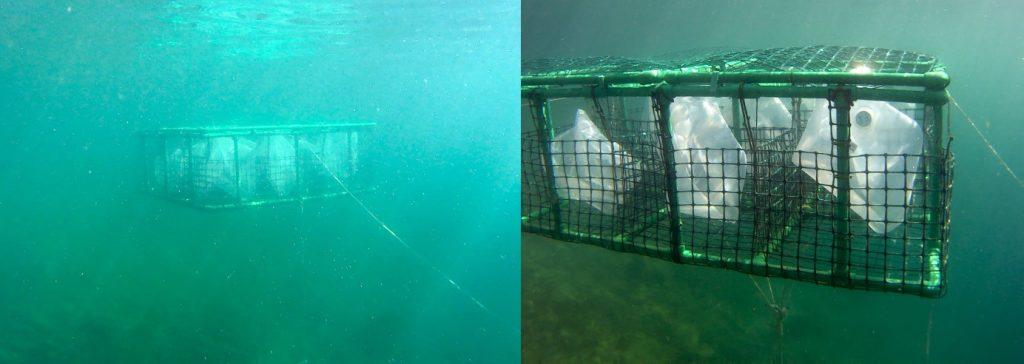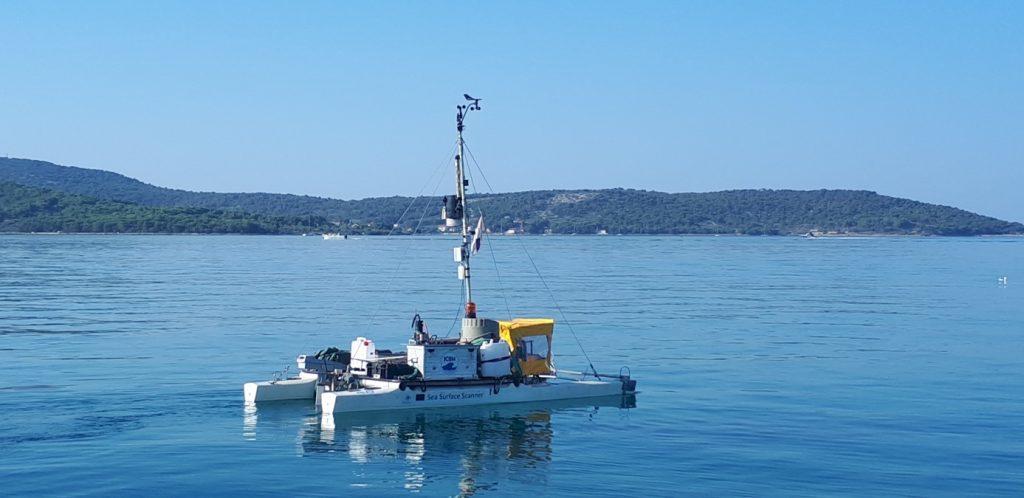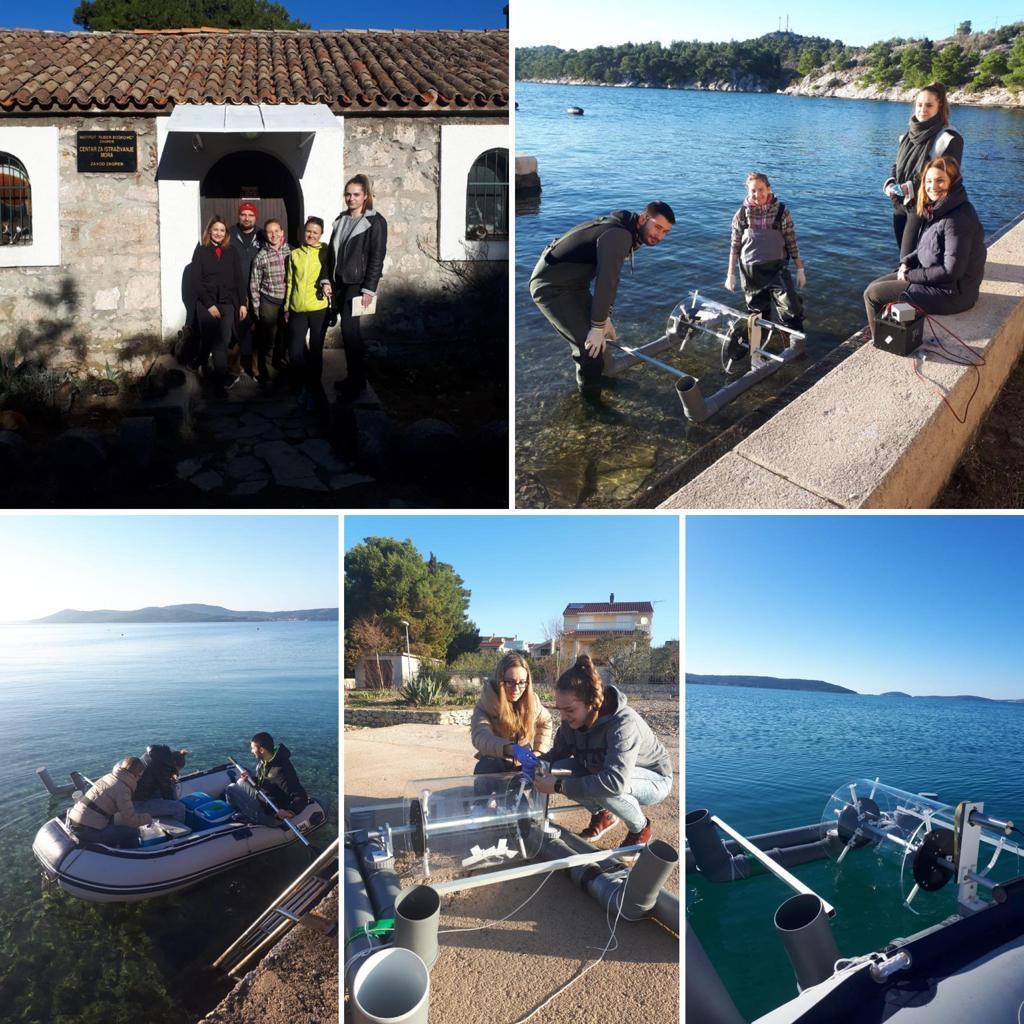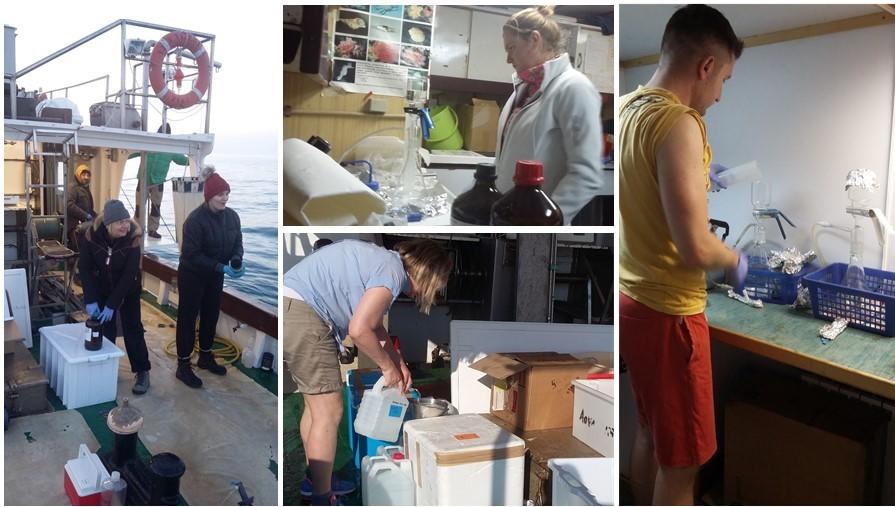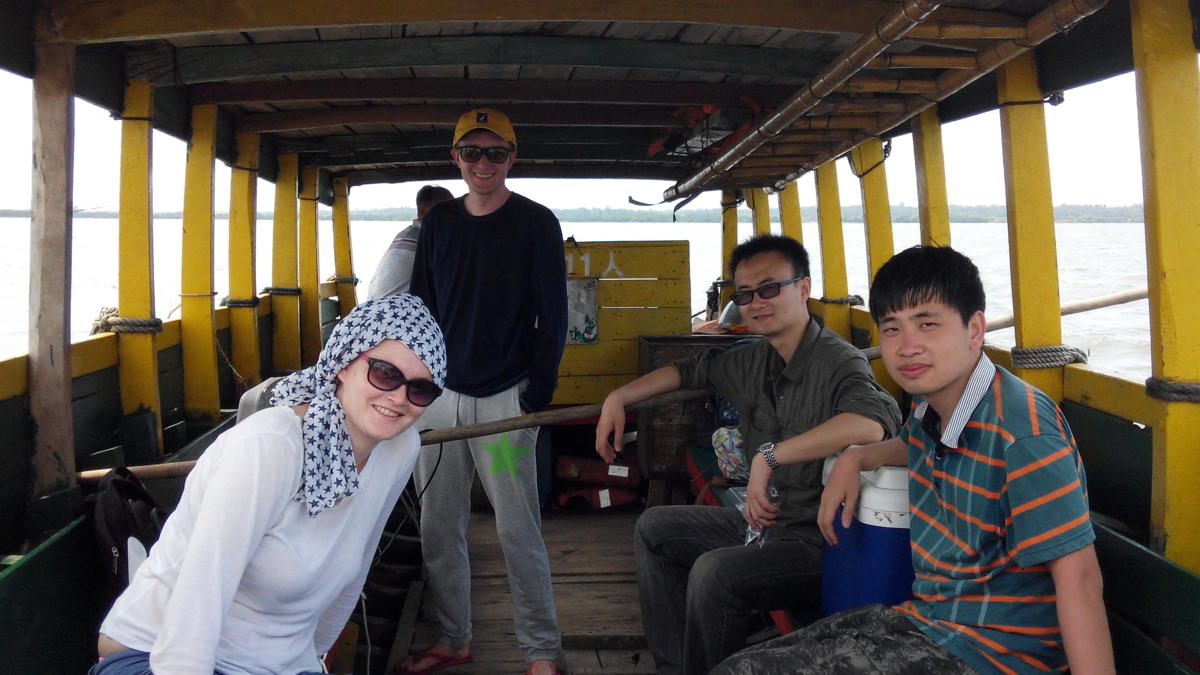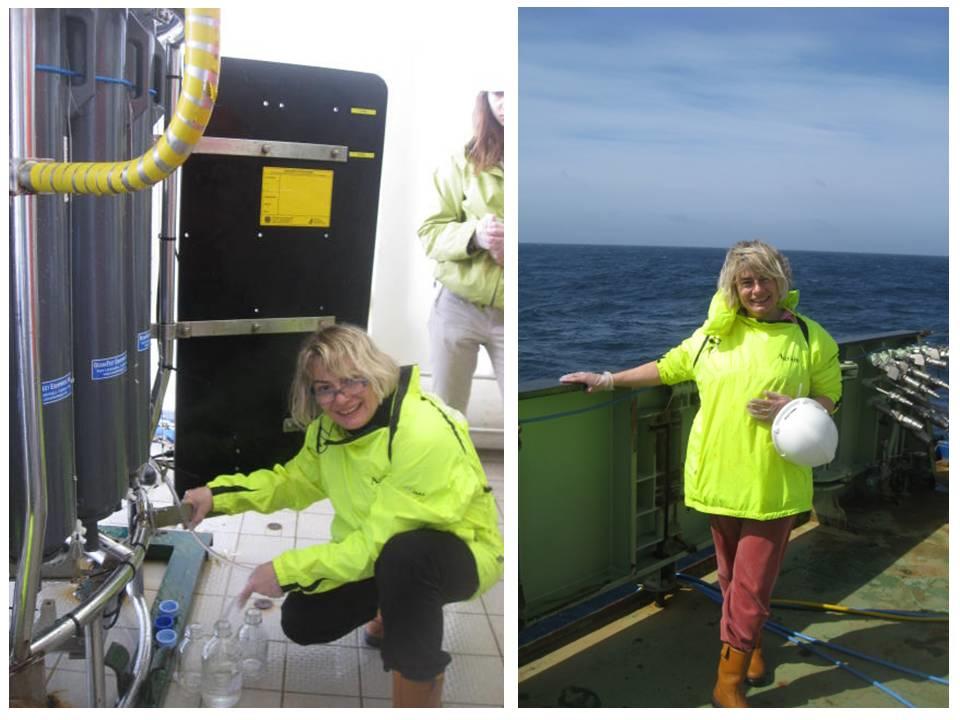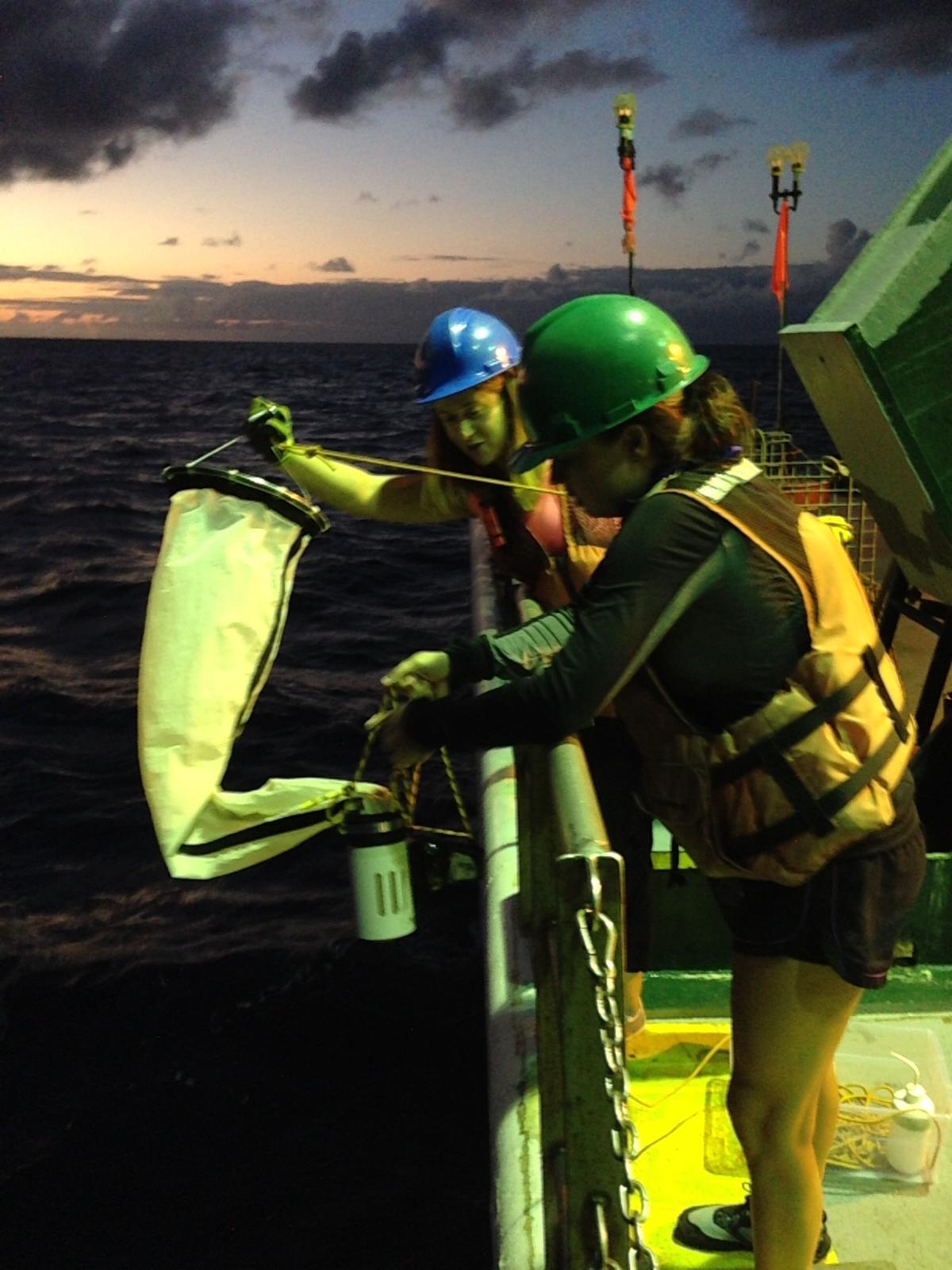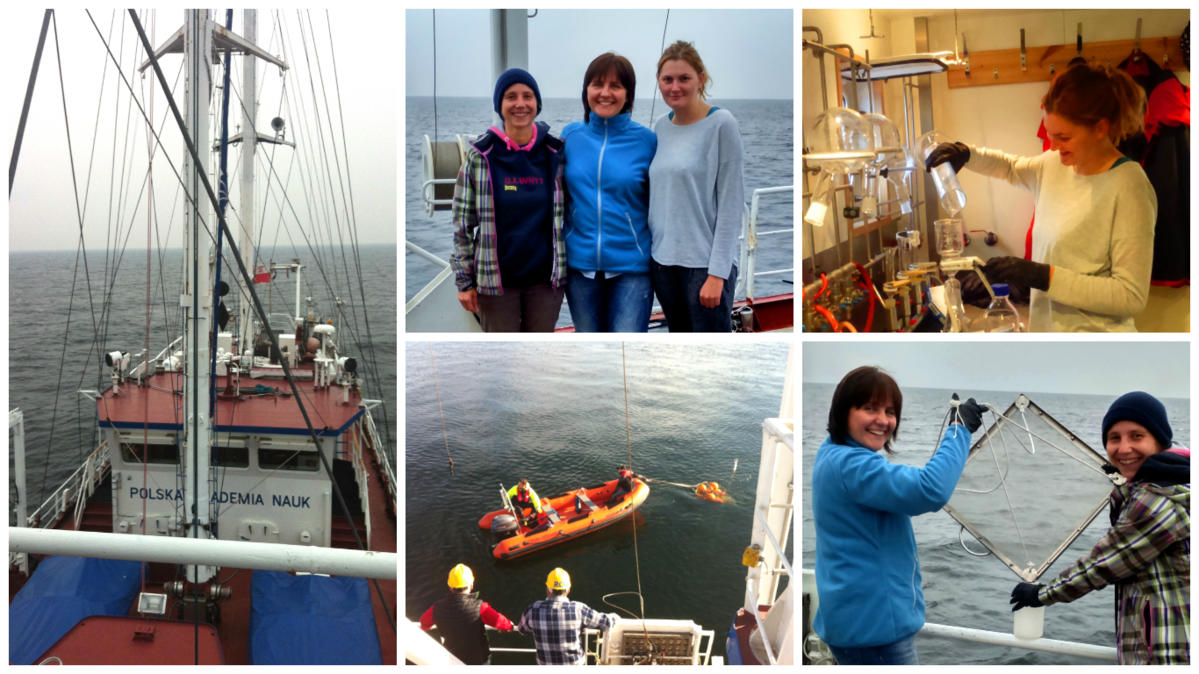In March 2024, sampling of seawater and atmospheric depositions in the central Adriatic began as part of the POLLMAR project with the aim of assessing the dynamic of pollen and subpollen organic material input to the seawater during pollen period.
Sampling of the sea surface microlayer with an electric drive sampler (made by: Dr. Dario Omanović, DMER, RBI)
Comde Derenda PNS 18 T DM - 3.1 aerosol sampler
On April 5, 2022 dr. Ivna Vrana Špoljarić was on the northern Adriatic by RV „Vila Velebita“ as part of the Croatian Science Foundation project "Molecular life strategies of phytoplankton in the Adriatic, Adri LIFE", PI Daniela Marić Pfannkuchen.
During sampling transect, a large number of common salpa (Salpa fusiformis) were present, which can be recognizable by their transparent and gelatinous body. This species is harmless to humans, but can have a significant negative impact on phytoplankton and micro zooplankton.
On September 13, 2021 dr. Ivna Vrana Špoljarić was on the northern Adriatic by RV „Vila Velebita“ as part of the Croatian Science Foundation project "Molecular life strategies of phytoplankton in the Adriatic, Adri LIFE", PI Daniela Marić Pfannkuchen.
On July 16, 2021 dr. Ivna Vrana Špoljarić was on the northern Adriatic by RV „Vila Velebita“ as part of the Croatian Science Foundation project "Molecular life strategies of phytoplankton in the Adriatic, Adri LIFE", PI Daniela Marić Pfannkuchen.
On June 16, 2021 dr. Ivna Vrana Špoljarić was on the northern Adriatic by RV „Vila Velebita“ as part of the Croatian Science Foundation project "Molecular life strategies of phytoplankton in the Adriatic, Adri LIFE", PI Daniela Marić Pfannkuchen.
On April 20, 2021 dr. Ivna Vrana Špoljarić and dr. Blaženka Gašparović were on the northern Adriatic by RV „Vila Velebita“ as part of the Croatian Science Foundation project "Molecular life strategies of phytoplankton in the Adriatic, Adri LIFE", PI Daniela Marić Pfannkuchen.
During sampling we encountered a very widespread red tide caused by the dinoflagellate Noctiluca scintillans, one of the most important and abundant red tide organisms. In the picture in the cup, Noctiluca scintillans could be seen as small bubbles in glass container.
This August (2020), the first mesocosm experiment investigating the impact of atmospheric pollutants on biochemical responses of the sea surface has been performed in the middle Adriatic area. It is also the first incubation experiment of its kind conducted in the Adriatic Sea.
The aim of the experiment was to explore how atmospheric particles emitted by various sources such as traffic, industry as well as biomass burning can affect the biology and chemistry of the sea surface layers.
Specially designed equipment for the mesocosm experiment was set up at the Martinska station near Šibenik. Incubation bags with the sea surface microlayer and the underlying water samples were incubated by different atmospheric additions and kept in the seawater, exposed to ambient sunlight, at different depths.
In the vicinity of the island of Zlarin, about 200 L of the sea surface microlayer was collected by a special remote-controlled catamaran, equipped with various sensors enabling on-line data collection, designed by dr. Oliver Wurl, University Oldenburg, Germany.
The mesocosm experiment brought together scientists from: several laboratories of the Ruđer Bošković Institute; University of Oldenburg, Germany; Institute of Oceanography and Fisheries, Split, Institute for Medical Research and Occupational Health, Meteorological and Hydrological Service in Croatia and University Pannonia, Hungary.
Andrea Milinković, Saranda Bakija Alempijević, Sanja Frka Milosavljević, Tomislav Bulat, Zdeslav Zovko, Abra Penezić and Lucija Plazibat conducted, every two weeks from February to July 2019, fieldwork at the Martinska Research Station with the aim of collecting atmospheric and marine samples as part of the ongoing CSF project: “Biochemical responses of oligotrophic Adriatic surface ecosystems to atmospheric deposition inputs (BiREADI)", (2018-2022) (PI S. Frka Milosavljević).
Regular one-day once a month field work by research vessel "Villa Velebita" on the transect Rovinj- Po River estuary, which includes collection of samples at stations SJ 107 and SJ 108 for lipid, dissolved organic carbon (DOC) and particulate organic carbon (POC) analysis.
T. Sesar and M. Čanković on a rented boat during sampling in the Wenchang Estuary, Hainan Island, China (May 2015), as part of bilateral collaboration between Repubic of Croatia and China, B. Gašparović and Z. Zhu: “A comparison of organic matter biogeochemistry in oligotrophic and eutrophic estuary: illustrated by lipids and amino acid enantiomers”.
B. Gašparović participating on 2013 EuroBASIN Cruise 87: The Twilight Cruise to the Porcupine Abyssal Plain Sustained Observatory, Atlantic, with RRS James Cook.
J. Godrijan on board RV Kilo Moana for a C-MORE Summer School „Microbial Oceanography: Genomes to Biomes” organized by Uni. Hawaii (June 2015).
Sampling and sample processing on board the research vessel Oceania on the Baltic Sea in October 2015. Participation in this expedition was enabled by cooperation with dr. Violetta Drozdowska from the Institute of Oceanology, Polish Academy of Science, in Sopot.


